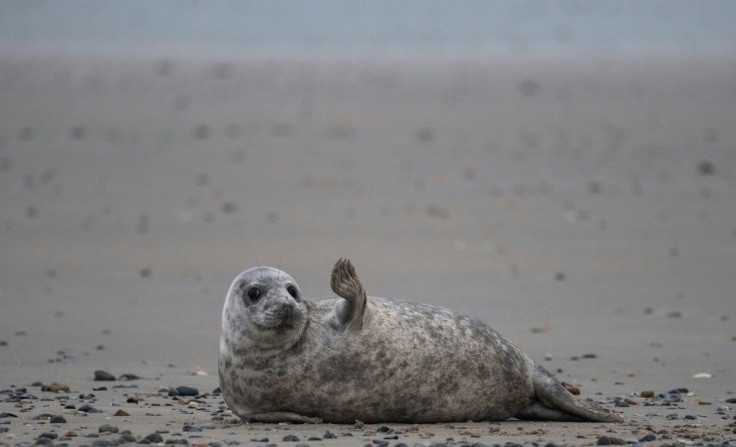Video Shows Wild Seal Clapping Underwater To Communicate [WATCH]

KEY POINTS
- A video shows a wild gray seal clapping underwater
- Clapping is a form of communication for seals
- Noise pollution can affect the seals' social behavior
A marine biologist was able to capture the moment when a wild seal clapped underwater. The rare footage shows how the animal communicates to catch the attention of other seals.
Although it’s quite common to witness seals clap and perform other gestures, these types of behavior are often exhibited by trained animals in zoos and aquariums. In other words, captive animals were trained to clap for entertainment purposes.
In a video, marine biologist Ben Burville of Newcastle University was able to show that seals, particularly gray seals in the wild, can clap on their own. He was able to catch the remarkable behavior on film while he was diving near the U.K.’s Farne Islands in October 2017.
In the video, a gray seal can be seen swimming close to Burville. A few moments later, the seal started clapping, which produced a loud and distinct sound even though it happened underwater.
According to Burville, male seals are usually the ones that clap. It is a form of communication practiced by the animals to convey a specific message to the other seals.
The behavior is similar to how humans catch the attention of others in a crowded room where everyone is talking loudly. Usually, making a gesture or distinct noise does the trick.
The same can be said of seals. While underwater, male seals would clap to produce a loud noise. The purpose of this behavior is to either attract a mate or ward off other seals. In addition to catching the attention of the other seals, clapping also allows the animal to display its strength.
“Similar functions underlie display behavior in many other species,” Burville and his colleagues stated in an article on The Conversation. “Think of a chest-beating male gorilla, for example. Like seal claps, those chest beats carry two messages: ‘I am strong, stay away,’ and ‘I am strong, my genes are good.’”
As noted by the marine biologist, the clapping of the seals shows that like other animals, they also rely on audible sounds for communication. It also plays an important part in their social behavior. Interfering with this behavior, such as through noise pollution generated by humans, could have a huge impact on the survival and breeding success of seals.
© Copyright IBTimes 2024. All rights reserved.




















